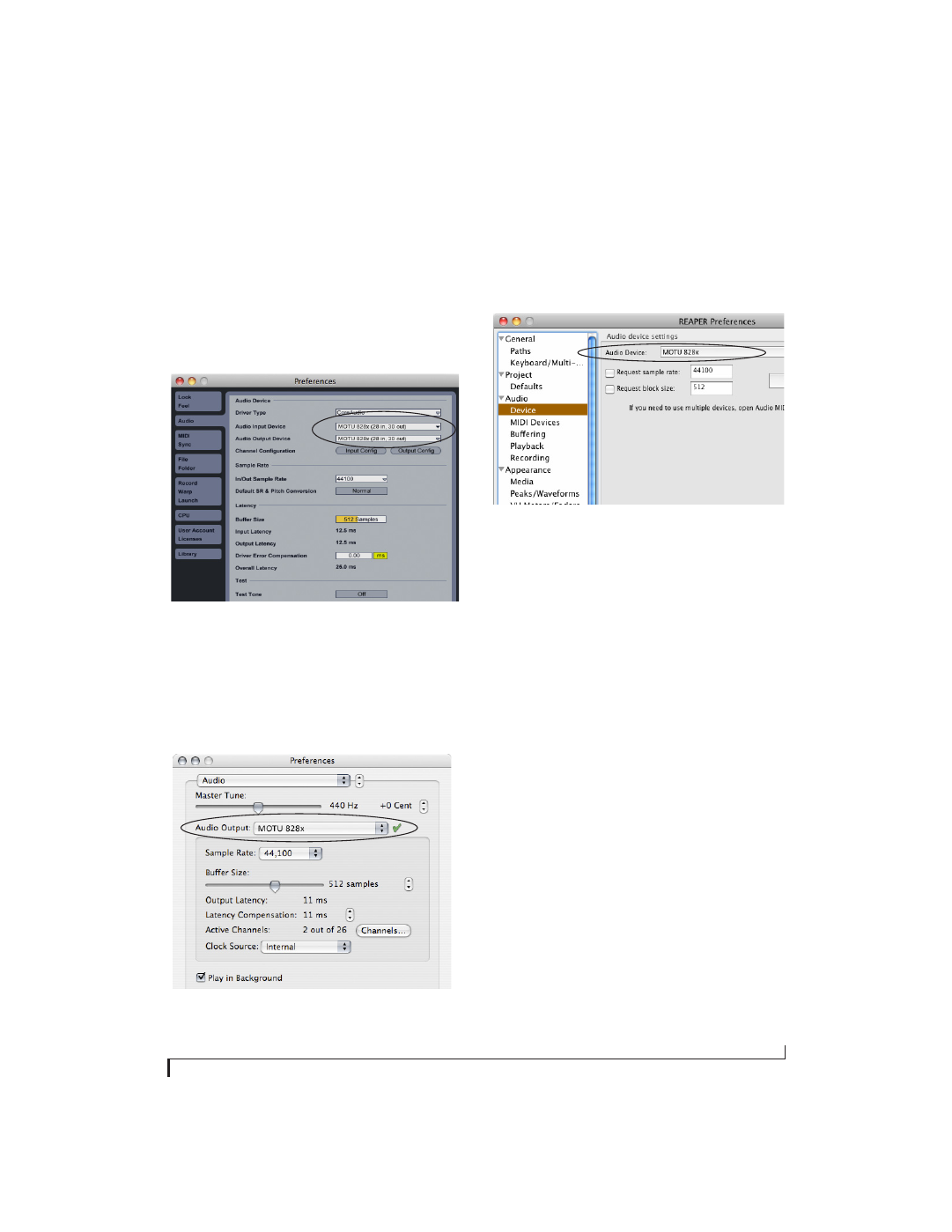Live, Reason and record, Reaper – MOTU 828x 28x30 Audio Interface with ThunderTechnology User Manual
Page 59: Other audio software, Reducing latency, Working with 828x inputs and outputs

C O N F I G U R I N G H O S T A U D I O S O F T W A R E
59
Live
In Ableton Live, access the preferences window and
click the
Audio
tab. Choose
Core Audio
from the
Driver Type
menu. Choose the
MOTU 828x
from
the
Input Audio Device
and
Output Audio Device
menus as shown below in Figure 7-7. To enable or
disable input or output channels, click the
Input
Config
or
Output Config
buttons.
Figure 7-7: Enabling the 828x in Live
Reason and Record
In Propellerhead Reason or Record, go to the
Preferences window, choose
Audio
preferences
from the menu and choose
MOTU 828x
from the
Audio Output
menu as shown below in Figure 7-8.
Figure 7-8: Enabling the 828x in Reason
Reaper
In Cockos Reaper, access the Preferences and click
Devices
under the
Audio
preferences. Choose
MOTU 828x
from the Audio Device menu as
shown below in Figure 7-9.
Figure 7-9: Enabling the 828x in Reaper
Other audio software
For other audio applications, the procedure is
similar to that shown above. Consult your owner’s
manual for further information.
REDUCING LATENCY
On Mac OS X, audio I/O buffer size is handled by
the host audio application rather than the 828x
Core Audio driver.
Most audio software applications provide an
adjustable audio buffer setting that lets you control
the amount of delay you’ll hear when monitoring
live inputs through your host audio software or
processing them with software plug-ins.
For information, see the “Adjusting the audio I/O
buffer” section of chapter 8, “Reducing Monitoring
Latency” (page 63).
WORKING WITH 828X INPUTS AND
OUTPUTS
Once you’ve enabled the 828x’s driver, 828x audio
inputs and outputs will appear in your host
software wherever audio inputs and outputs are
listed. If you don’t see the optical inputs and/or
